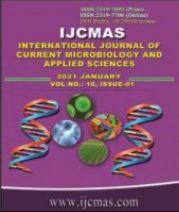


 National Academy of Agricultural Sciences (NAAS)
National Academy of Agricultural Sciences (NAAS)

|
PRINT ISSN : 2319-7692
Online ISSN : 2319-7706 Issues : 12 per year Publisher : Excellent Publishers Email : editorijcmas@gmail.com / submit@ijcmas.com Editor-in-chief: Dr.M.Prakash Index Copernicus ICV 2018: 95.39 NAAS RATING 2020: 5.38 |
Rice being the staple food for more than 50% of the world population, it is very essential to forecast the production of rice so as to meet the need of the rapidly growing population. Forecasting is also essential for better planning and decision making. Many forecasting techniques have evolved and it is the matter of prediction accuracy. In this study, the performance of ARIMAX-ANN hybrid forecasting model is compared with two other time series forecasting models, Autoregressive Integrated moving average with exogenous variables (ARIMAX) and Artificial Neural Networks (ANN) in forecasting the rice yield during both kharif and rabi seasons of Telangana state. The exogenous variables used in the study are percentage of dead hearts and percentage of white ears which are the damage symptoms of rice yield due to yellow stem borer (Scirpophaga incertulas). To compare the effectiveness of these three models 27 years rice yield data of both kharif and rabi seasons pertaining telangana state was used i.e., from 1990-2016 (both years inclusive). The results showed that ARIMAX-ANN hybrid model performed reasonably well compared to the other models i.e., Autoregressive integrated moving average model (ARIMA) and Autoregressive integrated moving average model with exogenous variables (ARIMAX).
 |
 |
 |
 |
 |